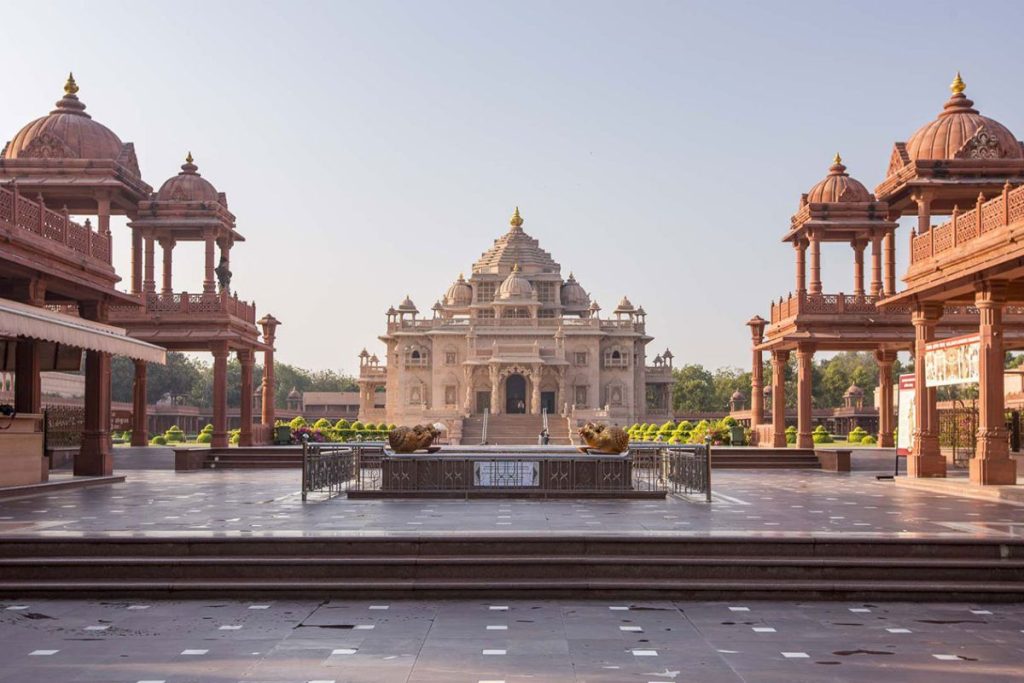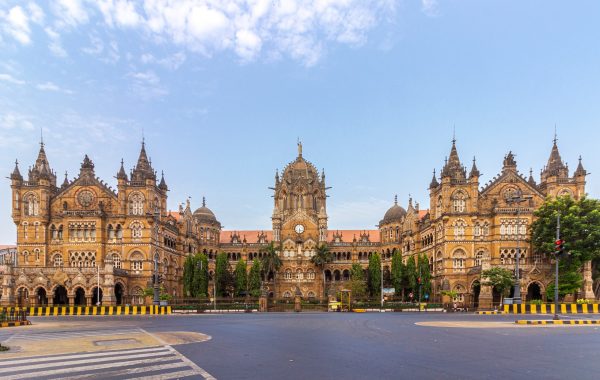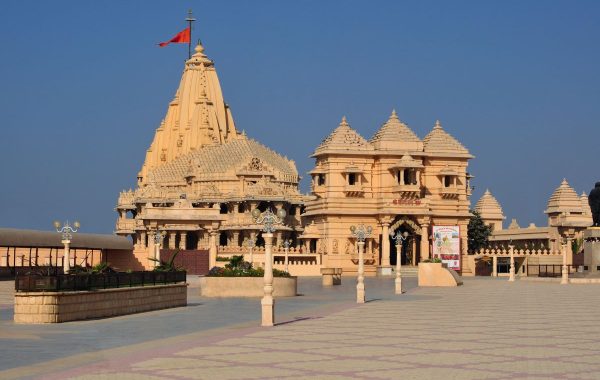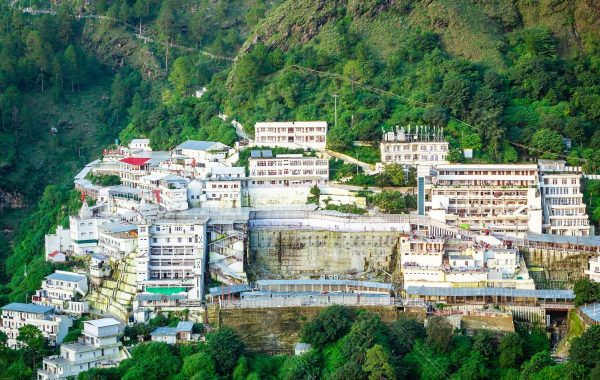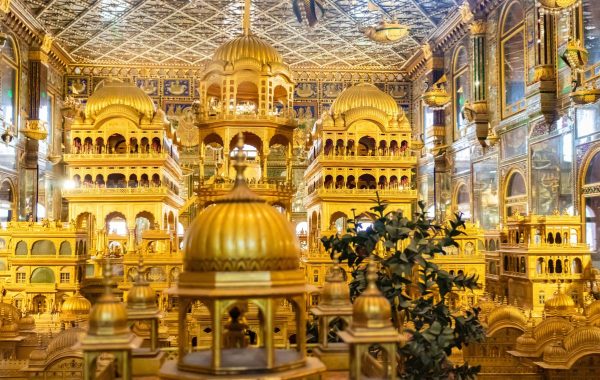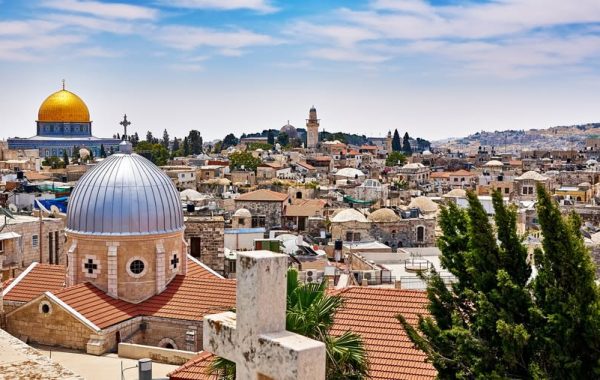From historic temples to serene mosques, discover the city’s rich cultural and religious heritage.
Ahmedabad, a city pulsating with life and history, is not only an economic hub but also a spiritual haven. The region is blessed with a diverse array of religious spots that beckon pilgrims and spiritual seekers from all walks of life. From ancient temples to tranquil mosques, Ahmedabad and its surroundings offer a kaleidoscope of divine experiences. Join us on a journey through the religious tapestry of this vibrant city.
Akshardham Temple
A short drive from Ahmedabad (30 kms) lies Akshardham temple, an awe-inspiring structure intricately carved from 6000 tonnes of pink sandstone, stands majestically amidst sprawling gardens within a 23-acre expanse in Gandhinagar district. Remarkably, this architectural marvel adheres strictly to the principles of Vastu Shastra, eschewing the use of steel in its construction. Rising to a height of 108 feet, with dimensions of 240 feet in length and 131 feet in width, Akshardham is a modern testament to Hinduism. At its heart lies a monumental sanctum housing a seven-foot-high idol of Lord Swaminarayan, adorned with gold leaf. The complex itself rests on seven sculpted pillars, supported by 210 single-piece stone beams, adorned with 57 window grills, M domes, and eight ornate zarokhas. The sanctum sanctorum encapsulates a 1.2-tonne gold-plated idol of Lord Swaminarayan, the revered founder of the eponymous sect. This divine representation depicts Lord Swaminarayan in a seated posture, his right hand raised in the abhay mudra. Flanking him are his disciples, Swami Gunatitanand on the right and Swami Gopalanand Swami on the left, both integral figures in the sect. Swami Gunatitanand is revered as Swaminarayan’s Akshardham, symbolizing the eternal abode.
Also Read: Why Celebrating Navratri in Gujarat Should Be on Your Bucket list
Sidi Saiyyed Mosque
Situated near Khanpur Gate, the Sidi Saiyyed Mosque is a captivating place of worship, drawing visitors with its remarkable architecture. Often referred to as Sidi Sayed ni Jali, this mosque was constructed during the years 1572–73 AD under the patronage of Sidi Sayed. Notably, this period coincided with the Mughal conquest of Gujarat. Sidi Sayed, an Abyssinian saint of African origin, served in Ahmed Shah’s army. Renowned for its impressive features, the Sidi Sayed Mosque is particularly celebrated for its exquisite jali windows. These windows exhibit a delicate, spider web-like intricacy, portraying the entwining branches of the ‘tree of life.’ The best vantage point to appreciate this fine craftsmanship is from the road that runs along the rear of the mosque. The Sidi Sayed Mosque continues to function as a place of prayer, maintaining its spiritual essence while inviting admirers to marvel at its architectural splendor.
Jama Masjid
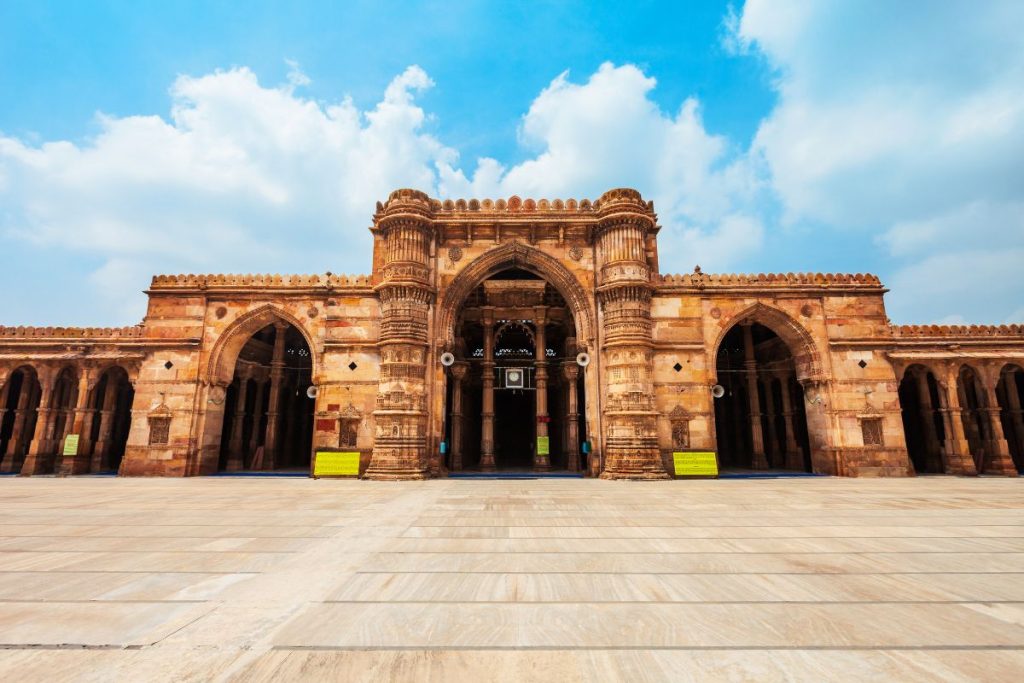
Established under the reign of Ahmed Shah in 1423, the Jama Masjid, located on Mahatma Gandhi (MG) Road, stands as one of India’s most enchanting mosques, graced by an expansive and serene courtyard. This architectural marvel exhibits a harmonious fusion of Islamic design and influences from Hindu and Jain religions, evident in the lotus-like carvings adorning some domes, reminiscent of the intricate detailing found in many Jain temples. The prayer hall, characterized by 260 columns supporting 15 principal domes at varying elevations, showcases the grandeur of the Jama Masjid. Noteworthy are the remnants of two ‘shaking’ minarets, which unfortunately lost half their height during the devastating earthquake of 1819. Despite this, their lower sections still stand on either side of the central portico of the prayer hall, adding a historical and architectural dimension to the mosque’s ambiance. Beyond its architectural magnificence, the Jama Masjid was strategically constructed as part of a broader urban design for the city. Positioned south of the processional axis leading from the Maidan-i Shah, adorned with three arches known as Teen Darwaza in the old city, the mosque plays a vital role in the city’s historical layout. Adjacent to the mosque, one discovers the mausoleums of Ahmed Shah, his son, and his grandson, forming a testament to the familial legacy associated with this sacred site.
Shree Swaminarayan Mandir
Constructed in 1822, this temple holds the distinction of being the inaugural temple of the Swaminarayan sect, showcasing a remarkable fusion of Maratha and Jain architectural styles. The commencement of the daily Heritage Walk, typically at 8 am, coincides with the temple’s worship sessions, attracting a multitude of devotees to its sacred premises. Adorned with Burma teak wood paneling featuring intricate artistic embellishments, the temple exudes an aura of craftsmanship and devotion. The gateway sculptures are particularly noteworthy, depicting Rajasthani costumes and vibrant colors. The primary deities enshrined within the temple include Nar Narayan Dev, Shree Radha Krishna Dev, Shree Dharmabhaktimata and Hari Krushna Maharaj, Shree Bal Swarup Ghanshyam Maharaj, and Shree Ranghmohal Ghanshyam Maharaj. Each deity symbolizes a unique facet of the Swaminarayan faith, inviting worshippers to partake in the spiritual journey.
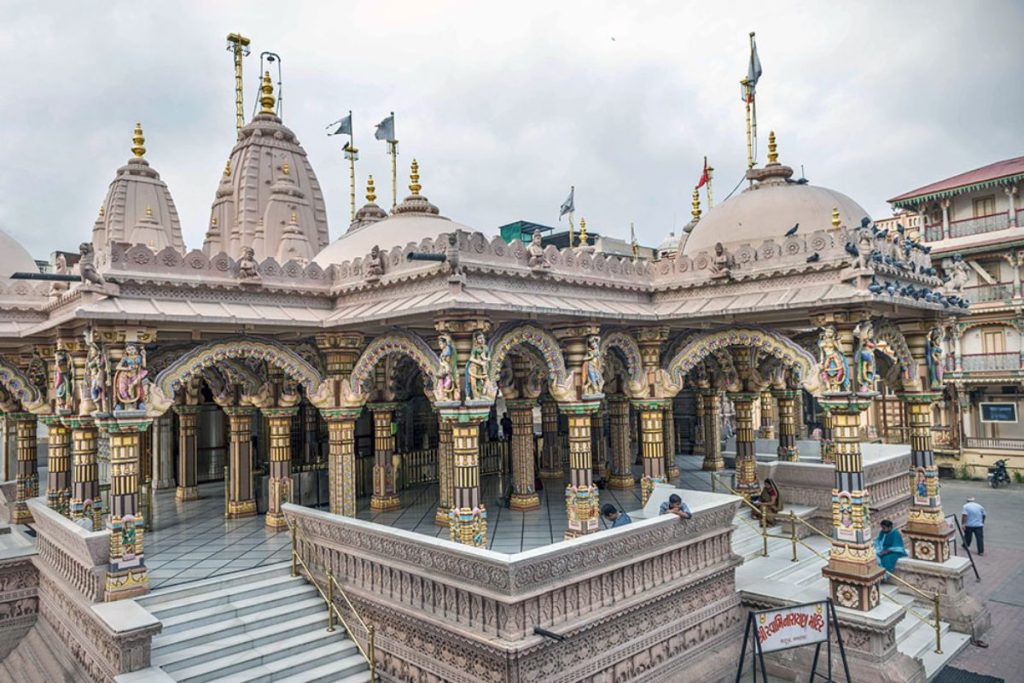
Modhera Sun Temple
The Modhera Sun Temple stands out as the most captivating among all the Sun temples in India. True to its name, this temple is devoted to the Sun God, a highly revered deity in Hinduism. Although the temple no longer hosts prayers, it remains a significant stopover due to its religious and architectural prominence. As per Archeological Survey of India Modhera Sun Temple was built in 1026-27 CE during the reign of Bhima I of the Chaulukya dynasty, and the temple follows a distinctive architectural blueprint encompassing three key structures – Surya Kund, Sabha Mandap, and Guda Mandap, also known as the sanctum sanctorum. A noteworthy feature of the temple is the cluster of 108 shrines in Surya Kund, adding to its allure. The temple once housed a golden idol of the Sun placed on a 15-ft deep pit, brimming with gold coins. Unfortunately, the temple experienced a decline in its grandeur and wealth, including the loss of the gold statue, when it fell victim to the plundering by Mahmud Gazni during one of his numerous invasions of India. Located approximately 102 km from Ahmedabad, the Modhera Sun Temple proudly stands on the banks of the River Pushpavati. Its rich history, intricate architecture, and the serene backdrop of the river make it a must-visit destination, offering a glimpse into India’s cultural and religious heritage.
Sarkhej Roza
Sarkhej Roza stands as a poignant reminder of Ahmedabad’s regal history, encompassing a mosque, tomb, and palace complex dedicated to the revered Sufi saint and spiritual advisor to Sultan Ahmed Shah, Ahmed Khatti Ganj Baksh. The graceful yet weathered structures encircle a grand tank, a creation attributed to Sultan Mahmud Begada, Shah’s grandson, in the mid-15th century. Serving as a retreat for multiple rulers of Ahmedabad, this atmospheric locale bears witness to the passage of time. Within its precincts, the mausoleums of Mahmud Begada, located near the entrance and adorned with geometric jalis that cast intricate patterns of light on the floor, coexist with the grandeur of Ganj Baksh’s tomb—the largest in Gujarat. Sarkhej Roza exudes a vibrant communal ambiance, with locals frequently indulging in picnics within its expansive courtyard. Despite its dilapidation, the complex preserves the echoes of bygone eras, inviting visitors to immerse themselves in the historical and spiritual tapestry of Ahmedabad.
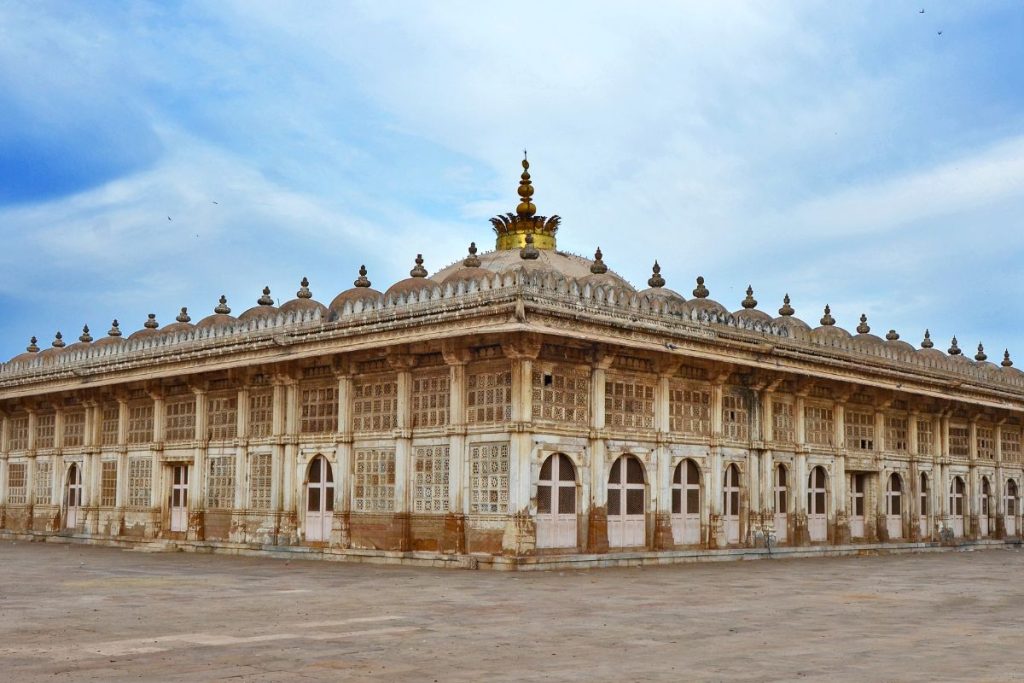
Ahmedabad, a city that seamlessly weaves together the threads of tradition and modernity, offers a pilgrimage through religious spots that cater to the spiritual aspirations of diverse communities. From the grandeur of the Akshardham Temple to the architectural marvels of mosques and temples, each sacred site contributes to the rich tapestry of Ahmedabad’s cultural and spiritual heritage. As pilgrims and tourists embark on this journey, they not only explore the divine but also witness the harmonious coexistence of various faiths that define the soul of this vibrant city.
For latest travel news and updates, food and drink journeys, restaurant features, and more, like us on Facebook or follow us on Instagram. Read more on Travel and Food Network
Trending on TFN
A Spanish Odyssey: Trafalgar’s Unparalleled Best of Spain Itinerary
Imperial Splendors: Trafalgar’s 10-Day Sojourn in Prague, Vienna, and Budapest


